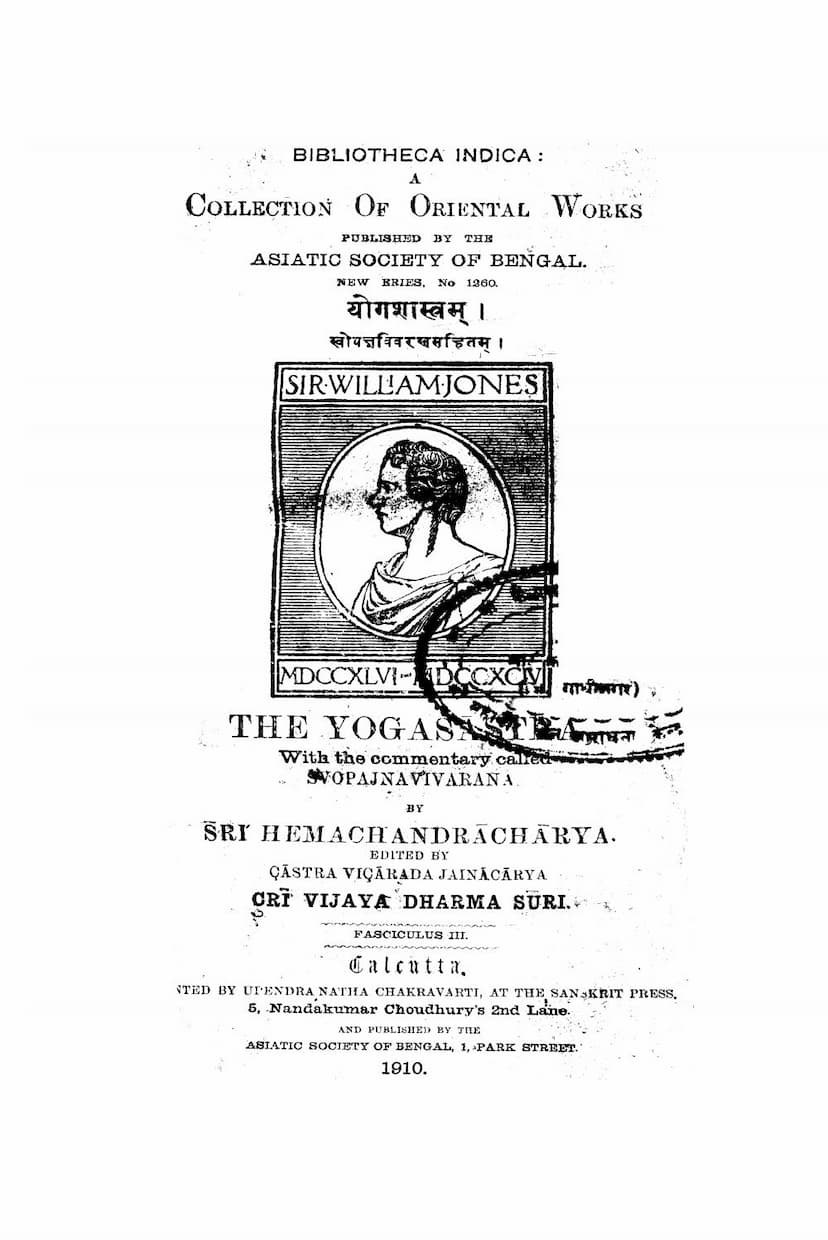Yogshastra Part 03
Added to library: September 2, 2025

Summary
This document is the third fasciculus of the Yogashastra (योगशास्त्रम्), a significant Jain text authored by Sri Hemachandracharya and edited by Sri Vijaya Dharma Suri. It was published by the Asiatic Society of Bengal in Calcutta in 1910.
Key Aspects and Content:
- Bibliotheca Indica Series: This publication is part of the Bibliotheca Indica series, a collection of oriental works published by the Asiatic Society of Bengal, aimed at making valuable ancient texts accessible to a wider audience.
- Author and Editor: The primary author is the renowned Jain scholar and poet Hemachandracharya, known for his contributions to Jain philosophy and grammar. The text is edited by Jainacharya Sri Vijaya Dharma Suri, highlighting the scholarly effort in presenting this work.
- Commentary: The title indicates that this edition includes the commentary known as "Vopajnavivarana" (वोपजनाविवरण), which is crucial for understanding the nuances of Hemachandracharya's original work.
- Part III: This is the third fasciculus, implying it's a continuation of a multi-part publication of the Yogashastra. The previous fasciculi would have covered earlier sections of the text.
- Content Preview (from pages 3 onwards):
- The provided pages contain the Sanskrit text of the "Dwitiya Prakash" (द्वितीय प्रकाशः), meaning the "Second Chapter" or "Second Discourse" of the Yogashastra.
- The content appears to be narrative, featuring characters like Sudharshana (सुदर्शन), Kapila (कपिला), and Abhaya (अभया).
- The narrative seems to revolve around themes of morality, temptation, and spiritual discipline, as exemplified by Sudharshana's steadfastness amidst attempts to seduce him.
- There are discussions about the consequences of lust, attachment, and the importance of virtue, particularly celibacy (Brahmacharya).
- The text includes philosophical and ethical teachings, illustrated through stories and dialogues.
- Later sections delve into detailed discussions on Vow observance (Vratas), specifically:
- Digvirati (दिग्विरति): Restricting movement in different directions.
- Bhogo-pabhoga Virati (भोगोपभोगVirati): Limiting consumption and enjoyment of objects.
- Anarthadanda Virati (अनर्थदण्ड Virati): Avoiding purposeless harm or sinful actions.
- There are extensive discussions on the impurities associated with various forbidden foods and actions, with detailed explanations of the harmful effects of consuming meat, alcohol, honey, and specific types of vegetables.
- The text analyzes the eighteen types of impure activities (ati-chara) related to the vows and the dangers of engaging in them.
- It also touches upon the importance of charity (Dana) and the concept of worthy recipients (Patra) for such donations.
- The later parts of the fasciculus (starting from page 457) move into the "Tritiya Prakash" (तृतीयः प्रकाशः), focusing on Guna Vratas (गुणव्रत) and Shiksha Vratas (शिक्षाव्रत), which are secondary vows in Jainism.
- Detailed explanations and critiques of various prohibitions and ethical guidelines are provided, including the strictures against night-eating, the consumption of certain roots and fruits, and the proper conduct for observing vows.
- The text emphasizes the importance of Santosh (संतोष), contentment, as a key virtue.
- It presents numerous illustrative stories (Kathānakas) such as the tales of Sagar, Kuchikarna, Tilak, Nanda, Sudharshana, Abhayakumar, Chalani pita, and Sangamaka, to explain and reinforce the ethical principles.
Overall Significance:
The Yogashastra is a seminal work in Jainism, providing a comprehensive guide to the practice of Yoga (in the Jain context, meaning spiritual discipline and practice). This third fasciculus offers detailed discussions on ethical conduct, the observance of vows, and the renunciation of harmful activities, all within the framework of achieving spiritual liberation. The publication by the Asiatic Society of Bengal underscores its academic and historical importance in the study of Indian religions and philosophies.